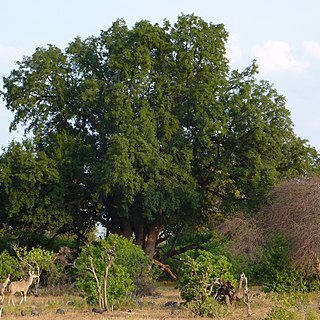A large tree. It is evergreen. The crown is rounded. It can be 25-30 m tall. The small branches hang down from the main stem. The leaves are alternate and compound. There are up to 7 pairs of leaflets and a leaflet at the end. The leaflets are oval and 5.5 cm long by 2 cm wide. They are green and glossy above and paler green underneath. The base is unequal. The flowers are small and white. They are almost pea shaped and rose scented. They occur in short sprays. These are 5-10 cm long. The fruit are almost like a large berry. They are 2.5 cm long and 1.7 cm wide. They are yellowish-brown when ripe. They contain a floury, fleshy, sticky pulp and a single black shiny seed. The fruit are edible.
Leaves with (7)9–11(13) leaflets, each (1.5)2–5(7) × (0.8)1–2(2.4) cm, elliptic or the proximal ones ovate and the distal ones obovate, proximal ones usually ± strongly asymmetrical at the base and rounded or emarginate at the apex, the distal ones subsymmetrical and cuneate at the base and rounded or acute at the apex, all coriaceous, dark green and shiny above, pubescent but glabrescent beneath, glabrous above; rachis and petiole up to 12(15) cm long, pubescent.
Usually a large spreading round-topped tree up to 20(30) m high, with a stout trunk branching low down, evergreen, or ± deciduous in drier places.
Fruit up to 2.5(3) cm long on a stipe up to 1 cm long, 1-or rarely 2-seeded.
Calyx c.3 mm long, greyish appressed-pubescent, with 5 very short teeth.
Racemes many-flowered, 4–8(12) cm long, softly pubescent.
Petals white, (8)9–10 mm long.


